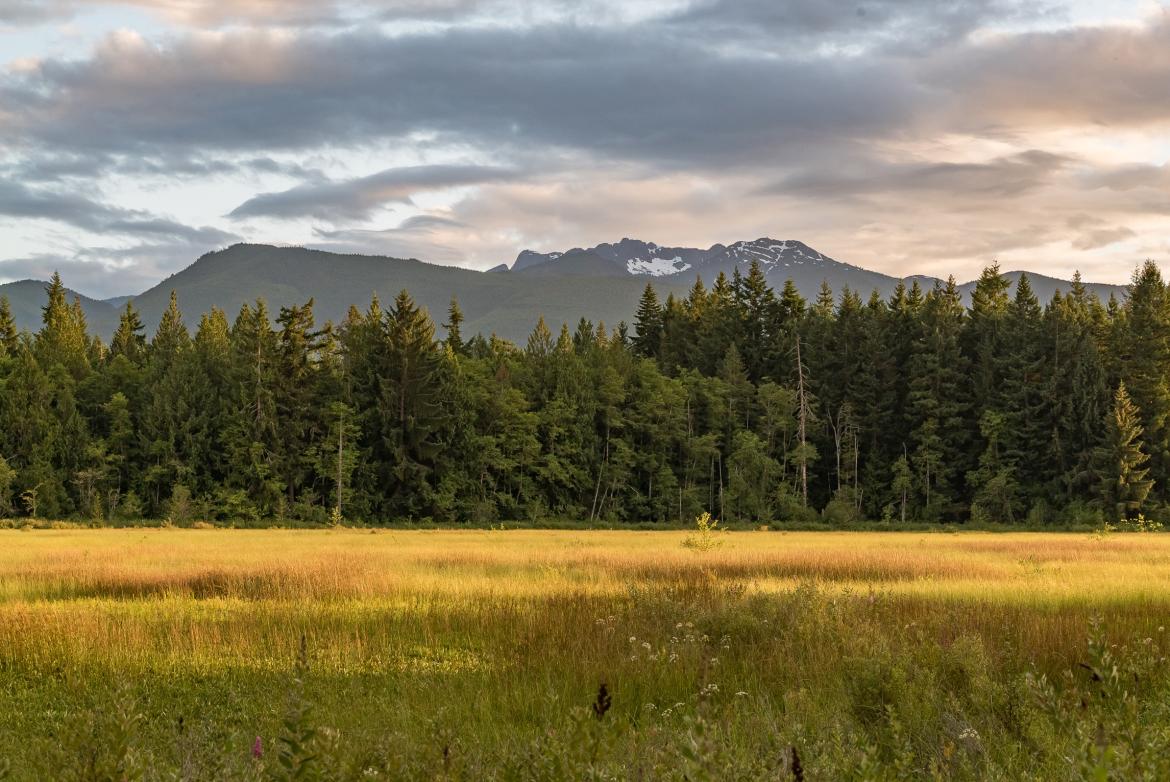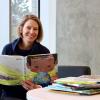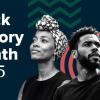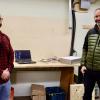
VIU researchers at the Mount Arrowsmith Biosphere Region Research Institute are working to protect and register land in the biosphere region. Arrowsmith Media photo
October 3, 2024 - 12:30pm
Eastern Vancouver Island is one of nine eco-crisis regions in Canada.
Only about three per cent of the land in the Mount Arrowsmith Biosphere Region (MABR) is protected and private land ownership is the biggest obstacle.
To protect terrestrial lands, people must register them in the Canadian Protected and Conserved Areas Database (CPCAD). Vancouver Island University (VIU) researchers at the Mount Arrowsmith Biosphere Region Research Institute (MABRRI) are working to protect and register land in the biosphere region. Graham Sakaki, MABRRI Regional Research Institute Manager, said some of the issue stems from the E & N land grant with most of the land owned by resource companies rather than the Crown.
“It is very difficult to find accessible areas to protect and conserve long term in our region. This project is helping to identify potential areas that would be appropriate for long-term conservation and educate the community on why they should be considered. It also helps register them in the Canadian Protected and Conserved Areas Database, which supports Canada’s efforts to achieve Global Biodiversity Framework Target 3 of protecting 30 per cent of lands by 2030,” he said. “Currently we’re a long way away in our biosphere region, but BC is a leader in Canada. We need to do a better job to ensure we can support the longevity and health of diversity of our biosphere region.”
MABRRI received funding from Environment and Climate Change Canada’s (ECCC’s) Nature Legacy Program for work between 2021 and 2026. The research institute, which is in its fourth year of the project, has received a commitment of approximately 1.25 million, which includes the most recent grant of $623,740.
“We are grateful to ECCC for recognizing the significance of biosphere regions across Canada, especially in the Mount Arrowsmith Biosphere Region. This funding allows us to collaborate with the community to research, prioritize and submit lands for recognition and long-term conservation and to restore degraded lands to support natural ecosystems.”
Eastern Vancouver Island, which includes the biosphere region, is one of nine eco-crisis regions as reported by the Nature Conservancy of Canada. According to the report, the area supports more biological diversity than anywhere else in the province and many of BC’s most ecologically significant estuaries. There are 59 species at risk in the region of which 38 species are of global concern. The region faces threats from human activity, invasive species and climate change.
“The report signifies the critical state we’re in within our biosphere as far as conservation of biodiversity. It is one of the most biodiverse places because of how unique our ecosystems are,” said Sakaki.
The research institute is working with various landowners within the biosphere region, both municipal and private, to determine what lands could or should be considered for protected areas or other effective area-based conservation measures. The areas must meet criteria and be registered in the Canadian Protected and Conserved Areas Database.
MABRRI is working with the BC Parks Foundation and Regional District of Nanaimo (RDN) on the French Creek Estuary Nature Preserve and contributed approximately $70,000 towards the acquisition thanks to grant funding the institute received. The French Creek Estuary Nature Preserve is now a designated Protected Area in the Canadian database.
“Before this nature preserve, which is the first of its kind within the regional district, all of their acquired land was put into parks or other zoning categories. This is a new land designation for these protected areas and this funding allows us to support this innovative approach the RDN has taken,” said Sakaki. “Our team actively participated in the management plan committee with the RDN and secured further funding from the Habitat Conservation Trust Foundation for restoration activities.”
The research institute is also working to support the designation of Heritage Forest in Qualicum Beach as a protected area. Other work includes landowner and stakeholder engagement, research, restoration and monitoring, education through a variety of avenues including the MABR biodiversity series, biological surveys and studies, and knowledge transfer and dissemination.
Learn more about MABRRI’s conservation efforts.
-30-
Media Contact:
Rachel Stern, Communications Officer, Vancouver Island University
C: 250.618.0373 l E: Rachel.Stern@viu.ca | X: @VIUNews
The VIU community acknowledges and thanks the Snuneymuxw, Quw’utsun, Tla’amin, Snaw-naw-as and Qualicum First Nation on whose traditional lands we teach, learn, research, live and share knowledge.






